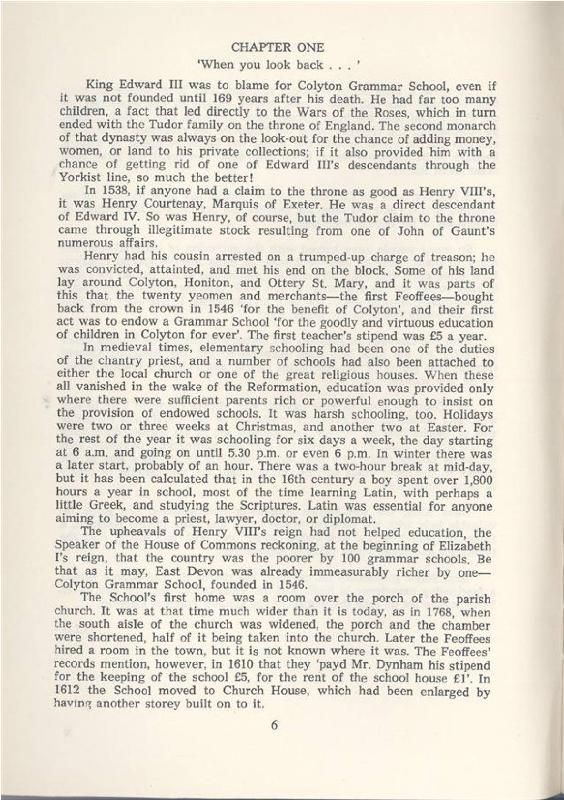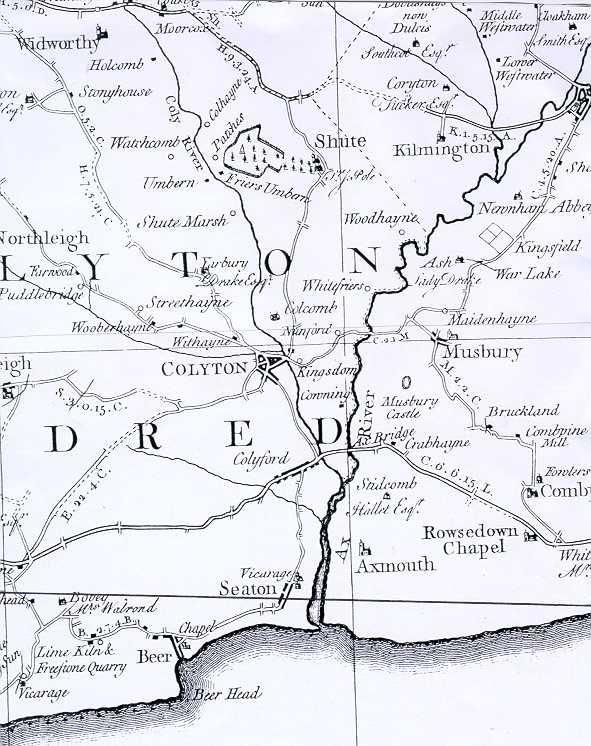Colyton & the Axe Estuary, Devon

Colyton History - as seen by Gerald Gosling p.5

Axe Estuary
Notes
- Originally the Axe Estuary had been a busy river with a major port at Axmouth.
The estuary provided important harbour facilities; with its proximity to the Fosse Way, which travels northward in an almost straight line to join with Watling Street at High Cross, 12 miles south-east of Atherstone, Warwickshire.
From about 1350 onwards shingle movement from West to East began blocking the river and preventing shipping from getting through.
By 1450, work had begun on a new harbour; digging a channel through the shingle to re-establish the deep water shipping access, but this was in vain as the tidal currents soon swept up more shingle to replace that which had been taken away.
As the river mouth narrowed the effect of the tide was much reduced, resulting in rapid growth of salt marshes from Seaton right up to and beyond Colyford.
In medieval times salt was extracted from sea water; which was evaporated in 'Pans' shallow scrapes lined with clay and when sufficiently reduced, removed by buckets and boiled.
Salt-working continued intermittently in the area until the 18th century.
Along with Colyton this part of Devon was clearly frequented by Henry VIII; as he gave the manors of Seaton and Axmouth to his last wife Catherine Parr.
The importance of the salt marshes increased the value of the Axe Estuary so much so that in 1539 Henry was able to sell the town to John Frye of Grays Inn and Yarty in Membury, a relative of Catherine's.
Frye then in turn sold the manor to John Willoughby of Payhembury and Gittisham in 1557.

